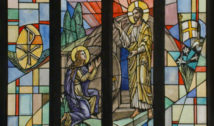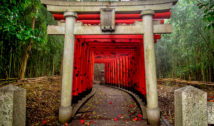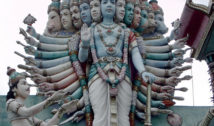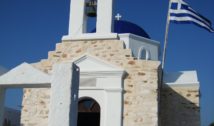Menorah and Cross Engravings from the Time of Jesus Discovered
- By C Barnett --
- 11 Jan 2017 --
Hikers find 2,100-year-old etched cross and menorah symbols in Judean foothills
Right after the New Year celebration, the Israel Antiquities Authority (IAA) announced the discovery of significant religious symbols dating back to Jesus Christ’s era. An ancient seven-branched menorah plus a nearby cross was found engraved on the walls of an early water cistern in the Judean shephelah or foothills where hidden caves and ancient dwellings abound.
Menorah and Cross Engravings from the Time of Jesus Discovered.[/tweetthis]
The discovery was made by three caves and hiking enthusiasts Ido Meroz, Sefi Givoni and Mickey Barkal who were initially drawn by their interest of the hidden caves in the area. As Meroz explains “Just before we were about to return we suddenly noticed an engraving that at first glance seemed to be a menorah. When we realized this is an ancient depiction of a menorah, we became very excited. Its appearance was quite distinct. We left the cave and reported the discovery to the Israel Antiquities Authority.”
Based on the initial dating estimates of IAA, the menorah image is believed to have been engraved from 530 BCE to 70 CE or during Jesus’ existence and the early beginnings of Christianity. The menorah featuring seven branches and a base with three feet is a rare find and suggestive of the Second Temple and the Bar Kokhba periods. The IAA stressed that it’s even rarer to find such type of menorah engraved in an item within the Judean shephelah. Currently, there are only two artifacts wherein such menorah was engraved on; in a burial complex at Bet Guvrin and in an oil press at Bet Loya.
Sa’ar Ganor, the IAA archaeologist of Ashkelon says the recent finding plays a significant role for the Jewish people. For Ganor, such discovery proves the existence of Jews in the land of Israel during the time of the Second Temple and the Bar Kokhba uprising. Ganor adds that the engraving was probably engraved by early Jews who took refuge in the area’s hidden caves during the Bar Kokhba uprising. The foothills are historically home to numerous buildings and structures during such period.
Engravings of a Seven-Branched Menorah and a Cross were Discovered in an Ancient Cistern in the Judean Shephelah https://t.co/OjEa67MxAW
— thomas reyser (@ReyserTh) January 8, 2017
The engraved cross is found near the menorah but according to the IAA, it may have been inscribed at a later date probably during the Byzantine period. Aside from these two religious symbols, several engravings depicting items like a key also abound in the cave. Within the cistern also lies an ancient columbarium used for raising doves. Doves are noted to be used as religious sacrifices during the Second Temple era.
This is not the only major discovery during the recently ended Hanukkah holiday in Israel. Last month, a stone bowl crafted during the Hasmonean dynasty was unearthed bearing the name of an ancient Jewish leader Hyrcanus. Meanwhile, the group which discovered the ancient menorah and cross engravings was accorded the good citizenship award plus the privilege of working with the IAA when it will commence further surveys of the Judean shephelah.



















